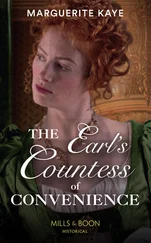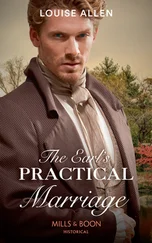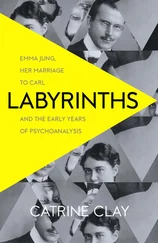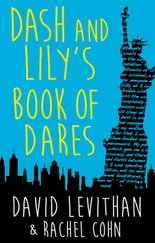Sis spoke endlessly about the benefits of learning from the aristocracy. In a good family Lily would be looked after and would learn to distinguish what was good taste and what was bad. Being surrounded by pictures, silverware, and fine china would cultivate her. It would be impossible to live among such beauty, Sis argued, without some of it rubbing off. On a more profound level, Sis believed the upper classes were morally ‘better’: it was as simple as that.
These ideas were backed up by a series of contemporary manuals. One, for example, A Few Rules for the Manners of Servants in Good Families , published by the Ladies’ Sanitary Association in 1895, had been in wide use during Sis’s childhood. The book makes the self-will and discipline required for a future of servitude all too clear. It is a bible of dos and don’ts, and could easily have engulfed an independent-minded young woman like Lily in a fog of inferiority. Don’t walk on the grass unless permitted or unless the family is out, and walk quietly; never sing or whistle; when you meet the mistress or master on the stairs, stand back or move aside for them to pass; when carrying letters or parcels, use a small salver or hand tray; never hand over a letter directly, risking skin contact, but place it instead on a nearby table. Another, A Servant’s Practical Guide: A Handbook of Duties and Rules for the Use of Masters and Mistresses , carries the same message. Its advice for coffee time leaves a mistress in no doubt of the kind of climate to cultivate:
The women servants stand behind the buffet, and pour out the tea and coffee. The only remark offered by servants in attendance is: ‘Tea or coffee, ma’am?’ Not ‘Will you take tea or coffee, ma’am?’ or ‘Shall I give you some tea ma’am?’ A well-mannered servant merely says in a respectful tone of voice ‘Tea or coffee, ma’am?’
Following the war, many former male and female servants had been reluctant to return to their old positions; war work had given them the taste for a more independent life. But in spite of this, post-war industrial depression and high unemployment led to a steady rise in domestic staff during the inter-war years. In the Borders, where there were large estates still operating on comparatively large incomes, domestic service never stopped being regarded as the principal source of employment for young girls.
Sis quite rightly viewed Lily’s Borders upbringing as an advantage. The Fairbairn Agency on the Edgware Road in London, for example, specialised in supplying simple Scottish maids to good English families, ‘mostly titled’. Glasgow girls were always rejected ‘as they are too rough’, as were ‘stockingless or made-up girls’. Country girls were ideal because they were so sensible, unsophisticated, and lacked the wisdom of the world, the three virtues Lily desired to be rid of. But she was given no choice. ‘So my days with the children were short-lived, and I was sent to “proper service”.’
3 Virescit vulnere virtus: Valour grows strong from a wound
On 14 October 1928 at 2.45 a.m., in a large, elegant bedroom on an upper floor of 34 Bryanston Square, London W1, the 12th Countess of Galloway, gave birth to a son and heir. The boy was christened Randolph Keith Reginald Stewart, names chosen in honour of his father, grandfather, and uncle. There was also the courtesy title of Lord Garlies, which the child would keep until his father’s death, whereupon he would succeed to the title of 13th Earl of Galloway. When Randolph arrived into the world that morning there was no indication of the troubles that lay ahead. Physically, he was perfect. Lord Galloway, the 12th Earl, could rest easy. Three years before Lady Galloway had delivered a daughter, Lady Antonia Marian Amy Isabel Stewart. Now that there was a boy the line would live on, for another generation at least.
Lord Galloway was an accomplished historian, particularly when it came to how the Earls of Galloway, one of Scotland’s oldest noble families, fitted into Britain’s history. They remain one of the main lowland branches of the Stewarts, and, in the absence of a chief, are considered by the Stewart Society, founded in Edinburgh in 1899 to collect and preserve the history and tradition of the name, to be senior representatives of the clan. If a lineage dating back to the twelfth century seemed irrelevant to a small boy born after the First World War, then it was not considered to be so by that boy’s father. Documents and articles held in the Stewart Society library bear many of Lord Galloway’s annotations and corrections. His heritage brought him great pride. He did not care for family members who chose to forget it.
The Galloway earldom has its roots in the Lord High Stewards of Scotland, whose line also produced the Stuart monarchs. When David I gave the 1st High Steward, Walter, his position, he effectively made him Scotland’s equivalent of Chancellor of the Exchequer and occasional army general. It was the third High Steward – also called Walter – who turned the title into his family name, which continues to this day. An unbroken male line descends from Sir John Stewart of Bonkyl, who died at the battle of Falkirk in 1298. Two of his sons fought alongside Robert the Bruce and were rewarded with lands. Their cousin, Sir Walter, later the 6th High Steward, also distinguished himself as a commander at Bannockburn in 1314. He was knighted on the battle field by Robert the Bruce and later married his daughter. Fifty years on, their son became King Robert II. In 1607 James I made Sir Alexander Stewart Lord Garlies. Sixteen years later he created for him the Galloway earldom. Queen Elizabeth II is a direct descendant of the royal Stewarts through the female line.
The early bravery and military inclinations of the Stewart relatives – some destined to become the Earls of Galloway – continued through the centuries, right up until Randolph’s birth. Some stood out. Lieutenant General Sir William Stewart, fourth son of the 7th Earl and Countess of Galloway, for example, co-founded the Rifle Brigade and fought in the Napoleonic Wars. His journals and papers, known as the Cumloden Papers and dating from 1794 to 1809, preserved at the family seat of Cumloden, contain a record of his achievements and include revealing correspondence from the Duke of Wellington and Lord Nelson.
Everything Lord Galloway knew and felt to be true about life derived from his family legacy. He was born on 21 November 1892, to Amy Mary Pauline, the only daughter of Anthony John Cliffe of Bellevue, County Wexford, and christened Randolph Algernon Ronald Stewart. His father, Randolph Henry Stewart, son of Randolph, 9th Earl of Galloway, had joined the 42nd Highlanders in 1855 straight from Harrow School. In his military career he survived some of the empire’s most significant conflicts. He served in the Crimea and was present at the siege and fall of Sebastopol (for which he received a medal with clasp and the Turkish war medal) and also at the Indian Mutiny, during which he was present at the fall of Lucknow (another medal with clasp). He retired, as a captain, in 1876. He was fifty-five by the time he married, fifty-six when his first son was born, and succeeded as 11th Earl of Galloway, following the death of his elder brother, the 10th Earl in 1901.
Two harrowing events in early adulthood had shaped Lord Galloway’s life. The first was the death of his younger brother, the Hon. Keith Stewart, killed during the First World War, and the second was his own experience serving in the Scots Guards during the first battle of Ypres. Wounded and close to death, he had been captured by the Germans and kept prisoner before finally being returned home.
Even before the Lieutenant Hon. Keith Stewart’s death on 9 May 1915, when he was head of the leading platoon of his regiment, the Black Watch, in the charge on Aubers Ridge, near Festhubert in Flanders, he was regarded by all – family, friends, schoolmasters – as extraordinarily brilliant, a rather special boy who, had it not been for his brother’s status as first son and heir, might well have eclipsed him in every way. At Harrow he was head of school, captain of the football First XI, had won the public schools’ fencing competition in 1911, the Macnamara Prize for English three years running, and had passed second into Sandhurst in 1913, then fifth out a year later. He was gazetted to the Black Watch in August 1914, and went to the front in the December. (Lord Galloway – then ‘Garlies’ – had been at Harrow School only a year when his brother arrived and his own time there would prove to be not nearly so distinguished.)
Читать дальше












